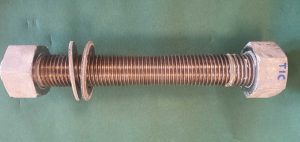The CeJacket project
The 4-year CeJacket project in Denmark was launched in early 2017 to develop more efficient methods for producing jacket structures, with the overall objective to reduce costs. The project was funded by Innovation Fund Denmark and aims to boost both employment and exports in the Danish wind industry in the long-term. The project was completed in November 2020.
The need for innovative foundations
As the global market for offshore wind power continues to grow, wind turbines are getting larger and are being constructed in deeper water. This requires different foundations and structures compared with conventional fixed-foundation wind turbines in relatively shallow water.
Some of these large deep-water turbines may require so-called jacket structures, which are steel substructures that are traditionally used in the oil and gas industry to support offshore rigs at water depths much greater than 100 m. The challenges for such structures include how to cost-effectively construct them while ensuring the use of high-strength and corrosion-resistant materials.
Cost-efficient foundations for offshore wind turbines
The CeJacket project investigated the potential to reduce the cost of wind turbine foundations, by for example investigating the use of modularized jacket structures with bolted connections instead of welded. Modularization would avoid the need for large specialist shipyard facilities and reduce manufacturing costs, while allowing the structures to be assembled either onshore or offshore.
“With modularization, it will be possible to assemble the individual parts for entire foundations on, for example, a harbor quay instead of at specific locations, such as shipyards, which cannot produce the enormous foundations in sufficient numbers,” says Finn Daugaard Madsen from Siemens Gamesa, who was the initial Project Manager for CeJacket. “This will mean a much more flexible production set-up for foundations.”
Fasteners for demanding marine environments
Modular jacket structure solutions with bolted connections might use stainless steel fasteners that can withstand the corrosion conditions across different parts of the structure. This includes below the waterline, above the water line and within the crucial ‘splash zone’, where corrosion conditions can be even more demanding due to repeated wet and dry cycles and build-up of salt deposits. The bolted connections must also have a high strength and provide a long-life maintenance-free fastener solution in all these areas.
BUMAX, together with its sister company Bufab Denmark provided the CeJacket project with fasteners for the partners to test. The design life of a wind turbine can be over 25 years, operating in locations around the world in harsh marine environments. BUMAX® 88 grade was selected after considering both technical and commercial factors and also taking into account experience from existing marine applications where the grade has continued to perform successfully.
BUMAX – high-strength corrosion-resistant solution for marine applications
The 2019 CeJacket Splash Zone Report by Force Technology, which documented three tests with BUMAX® 88 concluded that, “the stainless steel BUMAX® 88 mechanical fasteners and stainless bolt extenders did not display any signs of pitting or crevice corrosion, nor did they display any signs of cracks in the stud and nut base metal after testing.”
“The use of high-strength corrosion-resistant BUMAX products can be a good choice for demanding marine applications as they can reduce lifecycle costs and safeguard large capital investments, such as wind turbines – as the CeJacket project has highlighted,” says Robert Svendsen, Managing Director of Bufab Denmark. “Besides offering a great solution in terms of strength and corrosion, BUMAX® 88 fasteners are also a standard BUMAX product that we have in stock and are ready to ship anywhere in the world.”

Photo caption: No evidence of pitting or crevice corrosion, or cracks. (photo owned by Force Technology).


